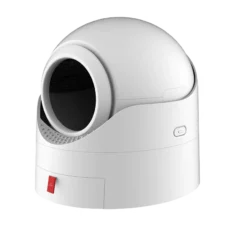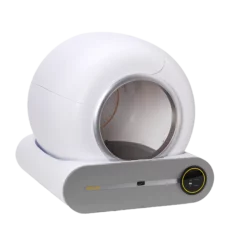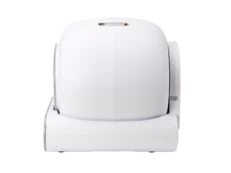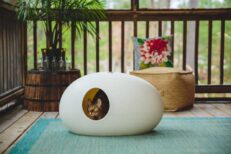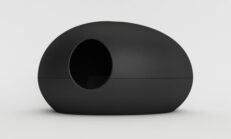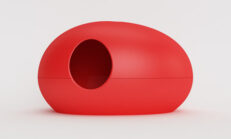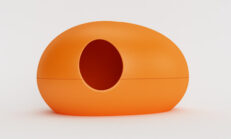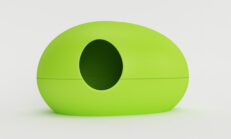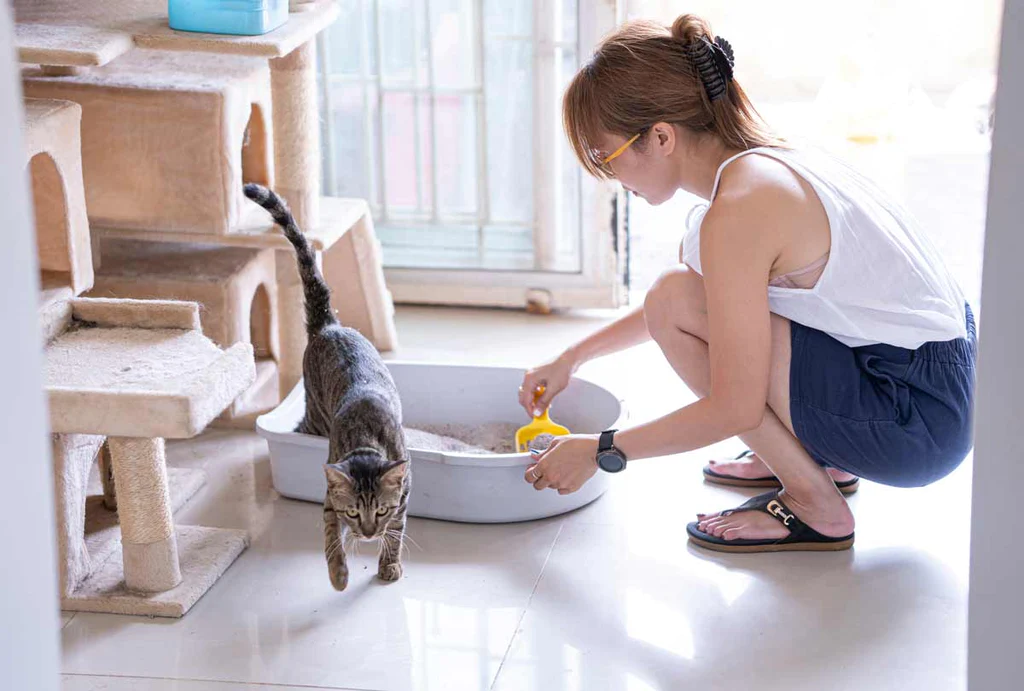
Tackling the Persistent Challenge of Litter Box Odors in Cat-Owning Households
In many homes where cats are treasured as pets, one of the less desirable aspects of cat ownership is the management of litter box odors. This issue goes beyond being a mere inconvenience; it significantly affects the living space’s comfort and air quality. Understanding the root causes of these unpleasant smells is crucial for effectively addressing them. Typically, the odors emanate from ammonia in cat urine, the growth of bacteria, and insufficient maintenance of the litter box. Additionally, various factors such as the number of cats in the household, the type of litter used, and the placement of the litter box can significantly influence the intensity of these odors.
Controlling litter box odors is not just about eliminating a bad smell; it’s vital for maintaining hygiene in the home. Unpleasant odors are often indicators of harmful bacteria that could pose health risks to both humans and pets. Furthermore, these odors can seep into fabrics and furnishings, creating a persistently unpleasant environment. Ensuring a home is free from these odors is also important for comfort and quality of life. A fresh-smelling home is more welcoming to both its inhabitants and guests. For individuals with sensitivities, these odors can trigger allergic reactions or exacerbate respiratory issues.
One of the most effective strategies in combating litter box smells is a regular cleaning routine. Frequent scooping, at least once or twice a day, and changing the litter regularly can drastically reduce odors. The type of litter used plays a significant role in odor control. Clumping litter, for example, helps isolate waste, making it easier to remove. Some litters are even formulated with odor-neutralizing agents to help keep smells at bay.
The location of the litter box can also impact how odors are perceived and managed. Keeping it in a well-ventilated area can help disperse odors more effectively. Additionally, using litter box liners and deodorizers can aid in minimizing smells and make cleaning an easier task.
The diet of a cat can influence the odor of their waste. A balanced diet can lead to less pungent waste, thereby reducing litter box odors. Sometimes, a strong odor can be a sign of a health issue in cats, such as a urinary tract infection. Regular health check-ups can help identify and address any such issues.
For those seeking a more hands-off approach, automated litter boxes can be a game-changer. These boxes facilitate regular cleaning, thereby reducing the effort required to keep odors under control. By understanding and implementing these various strategies, cat owners can significantly reduce litter box odors, leading to a healthier, more pleasant, and inviting living environment.
Exploring the Diverse Types of Cat Litter
When it comes to keeping a cat-friendly home, one of the key decisions pet owners face is choosing the right type of cat litter. This choice is pivotal not just for the comfort of the cat but also for maintaining the cleanliness and hygiene of the home. There is a variety of cat litters available, each with its unique properties and benefits.
Clumping litter, predominantly made from bentonite clay, is renowned for its ability to form solid, easy-to-scoop clumps when it contacts liquid. This feature makes it a favored choice for many cat owners due to its ease of cleaning. On the other hand, non-clumping litter, a more traditional form, absorbs urine but does not form clumps, making it slightly more challenging to keep clean. It’s typically made from materials like clay, wood, paper, or corn.
Then there’s silica gel litter, which consists of tiny, highly absorbent silica gel beads. It excels in controlling odors and is low on dust, making it a long-lasting option. However, some cats may find its texture unappealing. Natural options are also available, which are made from biodegradable materials like recycled paper, pine, wheat, or corn. These litters are eco-friendly and often effective in controlling odors, though their absorbency can vary.
Odor control is a significant aspect when selecting cat litter. Clumping litters are excellent for this purpose as they isolate waste, enabling easy removal and reducing odor buildup. Silica gel litters are also very effective in controlling odors as the beads absorb urine and lock in smells, although they require regular stirring for maximum effectiveness. Natural litters can be hit or miss in terms of odor control, with some like pine or wheat-based litters naturally neutralizing odors more effectively than others. Non-clumping litters generally fall behind in this area, as the lack of clumping can lead to stronger smells over time.
The selection of the right litter depends on several factors. The preferences of the cat are paramount – some cats may favor certain textures or materials over others. It’s important to observe your cat’s behavior and comfort with the litter. The household’s needs, such as the frequency of litter box cleaning, also play a role. For example, clumping and silica gel litters, while easier to maintain, require more regular attention.
Health considerations, especially for cats with respiratory issues, are important. Low-dust options like some natural litters or certain silica gels are preferable for sensitive cats. Environmental concerns also come into play, with biodegradable natural litters being an excellent choice for eco-conscious cat owners. Lastly, budget is an important factor, with clumping clay litters generally being more affordable, whereas silica gel and some natural litters might be on the pricier side.
By taking into account these various aspects, along with the specific odor control properties of different litters, cat owners can make a well-informed choice that suits both their feline friends and their home environment. It may take some trial and error to find the perfect fit, but the effort ensures a happy cat and a clean, odor-free home.
Delving into the Science Behind Litter Box Odors
Understanding the sources and nature of litter box smells is key to managing them effectively in a home with cats. The odors emanating from a litter box are primarily due to cat waste, which includes both urine and feces. The specific characteristics of these odors can be influenced by various factors such as the cat’s diet, hydration levels, and overall health.
Cat urine is known for its particularly strong odor. It contains compounds like urea, creatinine, uric acid, and notably, ammonia. When urea breaks down, it releases ammonia, which is responsible for the harsh, often overpowering smell typically associated with litter boxes. On the other hand, feces emit odors due to the bacterial decomposition of organic matter in the gut. This process produces compounds like indole, skatole, and various sulfurous gases, all contributing to the strong odor. As urine ages, bacteria further break down the urea, releasing more ammonia. In uncleaned litter boxes, high concentrations of ammonia can accumulate, leading not only to unpleasant smells but also potential respiratory irritation for both cats and humans.
To combat these odors, many cat litters are designed with specific additives and formulas. Absorbents are a key component; materials like bentonite clay in clumping litters and silica gel in non-clumping varieties work by rapidly absorbing urine, thereby reducing the time for ammonia formation. Odor neutralizers, such as baking soda or activated charcoal, are also commonly used. Baking soda is effective in absorbing odors, while activated charcoal can trap odor-causing molecules. Natural litters made from materials like pine, corn, or wheat often possess inherent odor-control properties. Pine, for instance, emits a natural scent that can mask odors, whereas corn and wheat can neutralize the smell of ammonia.
Enzymatic cleaners are another tool in litter box maintenance. These cleaners break down the organic components in urine and feces, eliminating odors at the molecular level. Additionally, some litters are formulated to balance the pH of cat waste. By neutralizing the pH, they can prevent the formation of ammonia, thus reducing the associated odors.
Armed with an understanding of the scientific principles behind litter box odors and the chemical solutions used to address them, cat owners can make informed decisions about the most effective litter and maintenance strategies. Regular cleaning of the litter box, combined with selecting the right type of litter, can significantly improve the living environment, ensuring it remains pleasant and hygienic for both cats and their owners.
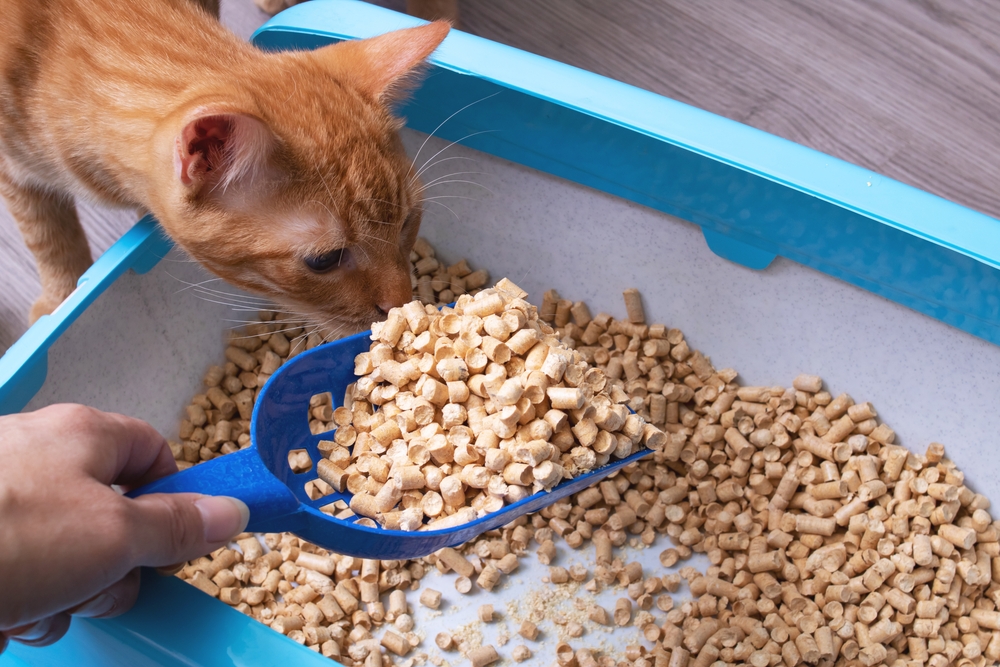
Effective Maintenance Strategies for a Fresh and Odor-Free Litter Box
Maintaining a fresh and odor-free litter box is crucial for creating a clean and hygienic environment for both your cat and your household. Regular upkeep is key, and there are several best practices that can help ensure your litter box remains clean and pleasant.
Daily maintenance is the most effective way to manage litter box odors. This involves scooping the litter box at least once a day to remove clumps of waste and solid feces. Regular removal of waste prevents the accumulation of odors and maintains a clean environment for your cat. The frequency of replacing the litter depends on the type you use; clumping litter often requires less frequent changes than non-clumping or natural varieties. Additionally, each time you change the litter, it’s beneficial to wipe down the box with a mild, pet-safe detergent or a simple water and vinegar solution. It’s important to avoid strong chemicals or ammonia-based cleaners, as these can be off-putting to cats.
A monthly deep clean is recommended to thoroughly eliminate lingering odors. This involves completely emptying the litter box and cleaning it with a gentle detergent or water and vinegar mixture. Enzymatic cleaners are particularly effective for tough odors as they break down the organic compounds that cause smells. After cleaning, a thin layer of baking soda, a natural odor absorber, can be sprinkled at the bottom of the box before adding new litter. Ensuring the box is completely dry after washing is also crucial, as moisture can harbor bacteria that contribute to odors.
When maintaining your litter box, it’s important to avoid certain common errors. Using scented litters or deodorizers might seem like a good way to mask odors, but the strong fragrances can be overwhelming for cats. Regular cleaning should not be neglected; failing to scoop daily or delay litter replacement can lead to rapid odor buildup and an unsanitary environment. The placement of the litter box also matters; it should be in an area with good ventilation but still provide privacy and quiet for your cat. Additionally, cleaners with ammonia or citrus scents should be avoided, as they can either mimic the smell of urine or be unpleasant for cats.
Lastly, it’s important to be aware that changes in the intensity of litter box odors can sometimes indicate health issues in your cat, such as a urinary tract infection. If you notice a significant change in odor, it’s advisable to consult your veterinarian.
By adhering to these guidelines for regular and deep cleaning and avoiding common pitfalls, you can maintain a litter box that is both fresh and appealing. This not only ensures a more pleasant living environment but also promotes the well-being and comfort of your feline companion.
Harnessing Innovative Products and Natural Solutions for Effective Litter Box Odor Control
The challenge of managing litter box odors in a household with cats can be met with an array of innovative products and natural solutions. These options range from specialized deodorizers to automated litter boxes, offering suitable choices for various needs and preferences. The key is to find a solution that not only effectively manages odors but also aligns with the comfort and health of your feline friend.
One common approach to litter box odor control is using powder deodorizers. These products are sprinkled over the litter and work by neutralizing unpleasant smells. When selecting a deodorizer, it’s important to opt for options that are non-toxic and cat-safe, preferably without heavy fragrances to avoid any discomfort to your cat. Odor-neutralizing sprays are another option, which can be used around the litter box area. These sprays tackle odors by breaking down the molecules responsible for the smell. Ensuring that these sprays are pet-safe and free from harmful chemicals is crucial for the safety of your cat.
Some litter boxes are equipped with built-in charcoal filters, which are excellent at absorbing odors. To maintain their effectiveness, these filters need to be changed regularly. In addition to these filters, small air purifiers can be placed near the litter box to help filter out dust and reduce odors. This not only tackles the odor issue but also improves the overall air quality in the vicinity of the litter box.
For those seeking a more convenient solution, automated or self-cleaning litter boxes are a great choice. These litter boxes come in various designs, such as rake-based systems that automatically rake away waste into a sealed compartment, thus minimizing the need for daily scooping. Other models use rotating or sifting mechanisms to separate waste, which is then collected in a waste drawer. While these litter boxes represent a significant investment, they offer considerable benefits for busy pet owners. It’s important, however, to keep these boxes well-maintained and to ensure that your cat is comfortable with these automated systems.
In addition to these products, several natural solutions can aid in controlling litter box odors. Baking soda, for example, can be used as a layer at the bottom of the litter box to absorb odors without causing any harm to your cat. A vinegar and water solution is another effective and pet-safe way to clean the litter box. For those looking for eco-friendly alternatives, natural litter substitutes like wood pellets, recycled paper, or wheat-based litter can be great choices. They not only offer a sustainable option but also come with inherent odor-controlling properties. Furthermore, placing odor-absorbing plants like spider plants or bamboo palms near the litter box can help reduce odors naturally.
When exploring these innovative products and natural solutions, it’s essential to consider the preferences and sensitivities of your cat. Every cat is unique, and what works for one may not be suitable for another. The goal is to create a more pleasant and hygienic home environment, not just for humans but also for the feline members of the household. By carefully selecting and introducing these solutions, cat owners can effectively manage litter box odors, contributing to the overall well-being and comfort of their pets.
The Importance of Litter Box Hygiene for Health and Well-being
Maintaining a clean litter box is essential not only for controlling odors but also for safeguarding the health of both cats and their human companions. It’s important to understand the health risks associated with poor litter box hygiene and to recognize the signs of potential health issues in cats, as these are crucial elements of responsible pet care.
For cats, the health risks include respiratory issues that can arise from the dust of certain types of litter or from the ammonia that builds up from urine. This can lead to irritation of their respiratory system. Moreover, a dirty litter box can lead to urinary tract infections, bladder inflammation, or constipation in cats. Stress and behavioral issues are also a concern; cats are inherently clean creatures and may experience stress or behavioral changes if they are forced to use a dirty litter box, which can further affect their overall health.
Humans are not immune to the risks posed by litter boxes. High levels of ammonia from cat urine can irritate the human respiratory tract, posing a particular risk to individuals with asthma or other respiratory conditions. Additionally, litter boxes can be a breeding ground for harmful bacteria like E. coli and parasites such as Toxoplasma gondii, which are especially dangerous for pregnant women and individuals with compromised immune systems. Allergies can also be aggravated by litter dust and dander, affecting sensitive individuals.
Changes in the odor of a cat’s waste can sometimes serve as an early indicator of health issues. For instance, a sudden increase in the pungency of urine odor could be a sign of a urinary tract infection or kidney disease. Similarly, a noticeable change in the smell of feces could indicate digestive problems or dietary intolerances. Any unusual or particularly foul odors should be a cause for concern and might warrant a veterinary check-up. Alongside odor, changes in the consistency or frequency of waste – such as diarrhea, constipation, or an increased frequency of urination – should also be closely monitored.
Regular monitoring of the litter box is not just about keeping a clean and odor-free environment; it also plays a crucial role in the early detection of potential health issues in cats. Significant changes in litter box odors or your cat’s bathroom habits should prompt a consultation with a veterinarian. By keeping the litter box clean and being vigilant about these signs, pet owners can take important steps in ensuring the health and well-being of both their feline companions and their families.
Conclusion
Maintaining a fresh and odor-free litter box is an integral part of responsible cat ownership, playing a significant role in the health and well-being of both the cat and the household. A well-maintained litter box not only keeps unpleasant odors at bay but also ensures a hygienic environment for your feline friend. The key lies in understanding and implementing effective litter box management strategies, tailored to the unique needs of each cat and household.
Different types of cat litter, such as clumping, non-clumping, silica gel, and natural varieties, offer various benefits in terms of odor control. Choosing the right type depends on both the cat’s preferences and the owner’s maintenance capacity. Regular cleaning is fundamental, involving daily scooping and periodic replacement of the litter. This routine is crucial for controlling odors and maintaining a clean environment. Additionally, a monthly deep cleaning of the litter box is essential to eliminate any lingering odors and maintain a high standard of hygiene.
Incorporating innovative products like deodorizers, sprays, automated litter boxes, and natural solutions can greatly enhance odor control and ease the maintenance process. However, it’s equally important to be aware of the health risks associated with poor litter box hygiene. Changes in litter box odors can be early indicators of health issues in cats, and recognizing these changes is a vital part of pet care. Regular monitoring and maintenance not only contribute to a more pleasant living environment but also play a critical role in the early detection of potential health problems in your cat.
Every cat and household is unique, necessitating a personalized approach to litter box management. Factors to consider include the cat’s litter preferences, the household’s lifestyle and space constraints, and the owner’s ability to maintain the litter box. For instance, some cats may have sensitivities to certain litter types or textures, and the placement of the litter box should align with the cat’s need for privacy and the household’s overall layout.
Consistency in cleaning is key to preventing odor buildup. The litter box should be placed in a well-ventilated area that is also quiet and low in foot traffic, ensuring comfort for your cat. In multi-cat households, it’s advisable to have more than one litter box to prevent overcrowding and maintain cleanliness. Observing your cat’s litter box habits can provide early signs of health issues, making regular monitoring crucial. Ensuring proper ventilation around the litter box can help minimize odors, and it’s important to avoid overcrowding the box with too much litter. Experimenting with different types of litter or litter box placements can help find the best fit for your cat and your home.
By following these guidelines, cat owners can ensure an odor-free and hygienic living space, enhancing the comfort and health of both their feline companions and themselves. The goal is to find the right balance between catering to the cat’s needs and managing the litter box effectively, fostering a happy and healthy environment for everyone involved.

